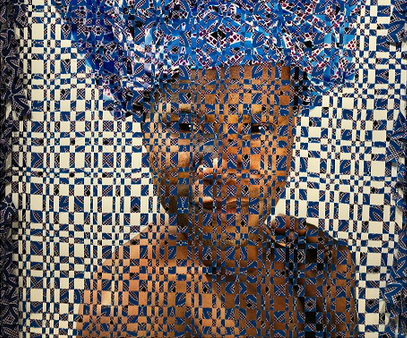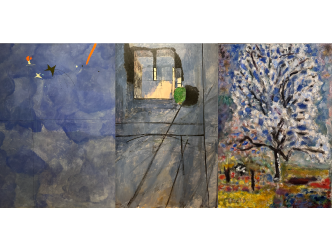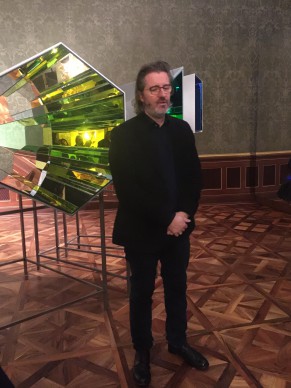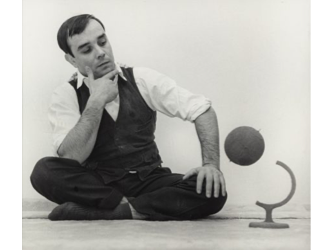From a French viewpoint, compelled by its colonial heritage, the African art that is known in France is often limited to the art from the French-speaking countries of sub-Saharan Africa. It was highlighted by a specialist and discoverer in his day, the dealer André Magnin, who created the largest collection of its kind which belongs to Jean Pigozzi (displayed last year at the Fondation Louis Vuitton) but who has also been the curator of various major exhibitions across the world, including a show on the Malian photographer Malick Sidibé, which ended on 25 February at the Cartier Foundation in Paris.
But Africa is far vaster than that. It is made up of 54 countries. 1-54 is in fact the name of the contemporary African art fair that launched five years ago in London (in October), then in New York the following year (in May) and is now for the first time being held in Marrakesh from the 23 to 25 February this year on a more modest scale, with 17 exhibitors.
The show was founded by a Moroccan, Touria El Glaoui. She conceived it as an activist operation: “Five years ago, there were very few events involving African art. Things have got better since then.
However, African artists are still just as badly represented at the large art fairs. Once this situation changes, I will be able to stop 1-54.” On this basis the Marrakeshi version of 1-54 must be supported, but the general standard of the offerings there was quite poor overall. It would appear that one of the major buyers was the King of Morocco himself, who sent his emissaries in very early to make multiple purchases in all categories of African Art, which he seems particularly passionate about.
That said, in Morocco the contemporary art market is only in its infancy. But activists like the art historian Mouna Mekouar, who just last year brought on board the prominent artist and performer Tino Sehgal to take part in Marrakesh (2), or the owner of the auction house CMOOA (Moroccan Company of Artworks and Items), Isham Daoudi, who opened a remarkable exhibition-sale space, Comptoir des Mines, in a modernist building, ought to move things forward.
There were, however, few Moroccan art stars in the fair. The most internationally well known of the artists born in Morocco is Mounir Fatmi (born in 1970), who now lives in Majorca. One of his large-format photos, in which he presents himself with his face drawn over in reaction to a fatwa put on his head, was on sale at the booth of the Officine dell’Immagine galleries from Milan for 16 000 euros, but his most important artworks today tend to sell for hundreds of thousands of euros.
The Moroccan gallery L’atelier 21 was presenting the poetic paintings of Yamou (born in 1959 in Casablanca). He works on his compositions in parallel, and they are always on the theme of flora and luxuriant gardens not far from Marrakesh. While his canvases may seem reminiscent of a Japanese style, the specialists speak instead of a Sufi spirit in which nature and man are one (3). The paintings were on sale for 9 000 euros.
The star of the fair, and certainly the most expensive artist at 1-54 Marrakesh, was Abdoulaye Konaté (born in 1953) from Mali who uses fabric in an infinite variety of colours as raw material for his abstract creations. During the last Venice Biennale he was exhibited in the international pavilion, and his London gallery, BlainSouthern, affirms that the Centre Pompidou recently acquired one of his older artworks. A large composition made out of strips of fabric in coloured variations which could be interpreted to be closely linked to music was presented for 85 000 euros.
At auction in Paris one of his artworks of this type was sold for 47 400 euros in 2008, his record price. Yossi Milo, known in New York as a specialist in contemporary photography, presented the work of an American, Kyle Meyer (born in 1985). But this artist had spent time in Swaziland where homosexuality is illegal. He photographed transvestites and reworked the prints in large format by literally weaving them with the fabric they were wearing.
These images were on sale for between 7 500 and 12 000 dollars. In order for the purpose of 1-54 to be fully realized in Marrakesh it still needs more major artists from the African art scene who are little known elsewhere, such as the Moroccan abstract painter Mohamed Melehi (born in 1936), who constitutes a perfect bridge between the abstract decors of Arab architecture and the equally geometric equivalents of contemporary America.
(1) André Magnin also took part in 1-54 Marrakesh.
(2) From 12 May she will be a curator at the sumptuous new premises of the Yves Saint Laurent museum in Marrakesh of an exhibition dedicated to Etel Adnan, Simone Fattal and Bob Wilson: www.museeyslmarrakech.com/
(3) The curator at the Centre Pompidou, Michel Gauthier, wrote a book on this for Editions Skira.
Support independent news on art.
Your contribution : Make a monthly commitment to support JB Reports or a one off contribution as and when you feel like it. Choose the option that suits you best.
Need to cancel a recurring donation? Please go here.
The donation is considered to be a subscription for a fee set by the donor and for a duration also set by the donor.













